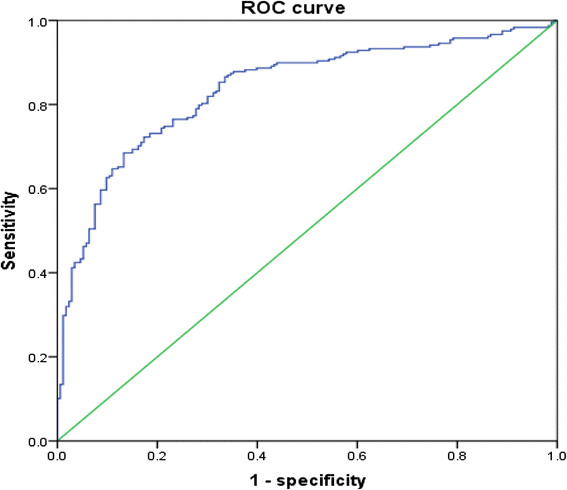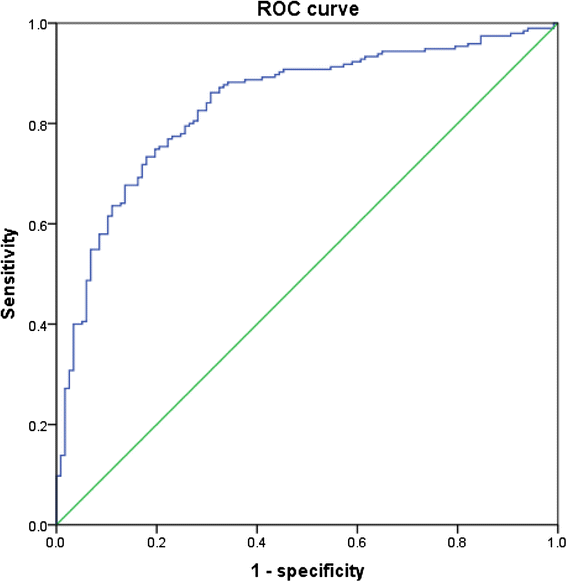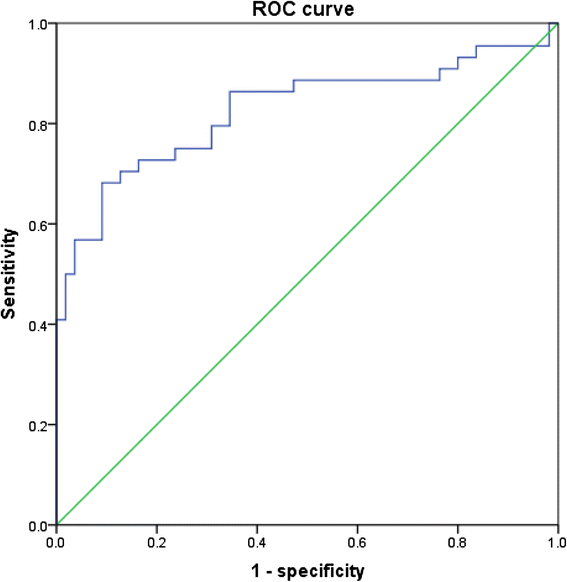Applicability of visceral adiposity index in predicting metabolic syndrome in adults with obstructive sleep apnea: a cross-sectional study
- PMID: 26931776
- PMCID: PMC4774032
- DOI: 10.1186/s12890-016-0198-0
Applicability of visceral adiposity index in predicting metabolic syndrome in adults with obstructive sleep apnea: a cross-sectional study
Abstract
Background: Obstructive sleep apnea (OSA) is severely affected by visceral adiposity (VA) that correlates to another disorder-metabolic syndrome (MetS). However, little is known concerning the relation of visceral adiposity index (VAI)-a novel and simple indicator of VA, with OSA and MetS. The objective of the study was to analyze the association of VAI with both disorders and applicability to identify OSA patients at risk of MetS.
Methods: Consecutive individuals undergoing polysomnography and biochemical tests were enrolled, and differences in all subjects grouped by apnea-hypopnea index (AHI) were analyzed. Spearman correlation was performed for assessing the relationship between VAI, OSA-related indices and metabolic score-total number of the positive diagnostic criteria of MetS. Receiver operating characteristic (ROC) curve was conducted to obtain a cut-off value of VAI for predicting incident MetS by sex. Then, the risk of MetS in OSA patients according to the cut-offs was attained by logistic regression.
Results: A total of 411 individuals were enrolled. Of whom, 361 subjects were diagnosed OSA (mild in 67 patients, moderate in 89 and severe in 205, respectively). A significant increasing trend based on AHI was observed in the variables of blood pressure, triglycerides, fasting glucose, incident MetS, metabolic score and VAI (all p < 0.05). Irrespective of gender, VAI was all significantly correlated with PSG characteristics as AHI, mean nocturnal oxygen saturation, the lowest oxygen saturation, metabolic score(all p < 0.05). A VAI of 2.282, 2.105, 2.511 (for all subjects, males and females, separately) were calculated to determine the occurrence of MetS. According to the cut-offs, OSA patients tended to suffer from greater risk in MetS (odds ratio [OR] = 10.237, p = 0.000; OR = 13.556, p = 0.000; OR = 21.458, p = 0.000).
Conclusions: The present study suggested that VAI was significantly associated with MetS and OSA. As a simple and alternative approach obtained in everyday practice, it may offer a powerful tool to identify patients with OSA at risk of MetS.
Figures



Similar articles
-
[Relationship of visceral adiposity index with serum aminotransferase and nonalcoholic fatty liver disease in patients with sleep apnea].Zhonghua Yi Xue Za Zhi. 2015 Nov 10;95(42):3420-3. Zhonghua Yi Xue Za Zhi. 2015. PMID: 26813130 Chinese.
-
Visceral Adiposity Index (VAI) in Children and Adolescents with Obesity: No Association with Daily Energy Intake but Promising Tool to Identify Metabolic Syndrome (MetS).Nutrients. 2021 Jan 28;13(2):413. doi: 10.3390/nu13020413. Nutrients. 2021. PMID: 33525454 Free PMC article.
-
Gender-specific anthropometric markers of adiposity, metabolic syndrome and visceral adiposity index (VAI) in patients with obstructive sleep apnea.J Sleep Res. 2014 Feb;23(1):13-21. doi: 10.1111/jsr.12088. Epub 2013 Oct 9. J Sleep Res. 2014. PMID: 24118617
-
Composite lipid indices in patients with obstructive sleep apnea: a systematic review and meta-analysis.Lipids Health Dis. 2023 Jun 29;22(1):84. doi: 10.1186/s12944-023-01859-3. Lipids Health Dis. 2023. PMID: 37386562 Free PMC article.
-
The Accuracy of Visceral Adiposity Index for the Screening of Metabolic Syndrome: A Systematic Review and Meta-Analysis.Int J Endocrinol. 2021 Jul 26;2021:6684627. doi: 10.1155/2021/6684627. eCollection 2021. Int J Endocrinol. 2021. PMID: 34354748 Free PMC article. Review.
Cited by
-
Elevated Serum Sialic Acid Levels May be Associated With Diabetes Retinopathy: A Cross-Sectional Study in Ghana.Front Clin Diabetes Healthc. 2022 Jul 1;3:871051. doi: 10.3389/fcdhc.2022.871051. eCollection 2022. Front Clin Diabetes Healthc. 2022. PMID: 36992772 Free PMC article.
-
Association of adiposity with risk of obstructive sleep apnea: a population-based study.BMC Public Health. 2023 Sep 21;23(1):1835. doi: 10.1186/s12889-023-16695-4. BMC Public Health. 2023. PMID: 37735660 Free PMC article.
-
Association between obstructive sleep apnea and visceral adiposity index and lipid accumulation product: NHANES 2015-2018.Lipids Health Dis. 2024 Apr 10;23(1):100. doi: 10.1186/s12944-024-02081-5. Lipids Health Dis. 2024. PMID: 38600516 Free PMC article.
-
Association between visceral adiposity index and sleep disorders among the U.S. adults: a cross-sectional study.Front Neurol. 2025 May 9;16:1540182. doi: 10.3389/fneur.2025.1540182. eCollection 2025. Front Neurol. 2025. PMID: 40417111 Free PMC article.
-
Association of Short Sleep Duration and Obstructive Sleep Apnea with Central Obesity: A Retrospective Study Utilizing Anthropometric Measures.Nat Sci Sleep. 2024 Oct 2;16:1545-1556. doi: 10.2147/NSS.S483984. eCollection 2024. Nat Sci Sleep. 2024. PMID: 39372895 Free PMC article.
References
-
- Park YW, Zhu S, Palaniappan L, Heshka S, Carnethon MR, Heymsfield SB. The metabolic syndrome: prevalence and associated risk factor findings in the US population from the Third National Health and Nutrition Examination Survey, 1988–1994. Arch Intern Med. 2003;163(4):427–36. doi: 10.1001/archinte.163.4.427. - DOI - PMC - PubMed
Publication types
MeSH terms
Substances
LinkOut - more resources
Full Text Sources
Other Literature Sources
Medical
Research Materials

